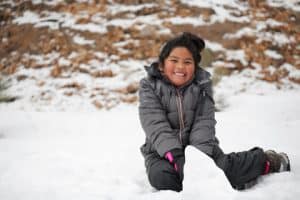Holidays, religious celebrations, and cultural festivities all come into play for students and teachers during the early winter months at school. November and December are a memorable and fun time of year for many students—with plenty of winter school and classroom activities in the time leading up to the school break.
In the midst of all the activities, it can be easy to only focus on the most commonly celebrated holiday in your area, such as Christmas. Even the most well-meaning teachers can show implicit bias when it comes to holiday events. Yet not every student celebrates Christmas. Some may celebrate holidays connected to their own cultural or faith backgrounds, and some may not celebrate any winter holidays.
Each student’s religious expression is fully protected by the First Amendment of the US Constitution, and when it comes to religious holidays, the US Department of Education instructs: “Although public schools may teach about religious holidays, including their religious aspects, and may celebrate the secular aspects of holidays, schools may not observe holidays as religious events or promote such observance by students.”
Educators can celebrate the winter holiday season in a way that is inclusive for all students. By acknowledging the diversity in winter holidays and observances that students celebrate and guiding teachers to do the same, you can also highlight the special things your students love about this season.
Consider School Holiday Celebrations with an Inclusive Mindset
 Look for themes common to many holidays—things like sharing and togetherness, or the way lights are used for Hanukkah, Christmas, Kwanzaa, Diwali, and other holidays. Emphasize these shared elements in your winter-themed school and classroom decorations.
Look for themes common to many holidays—things like sharing and togetherness, or the way lights are used for Hanukkah, Christmas, Kwanzaa, Diwali, and other holidays. Emphasize these shared elements in your winter-themed school and classroom decorations.
While it may seem helpful to ask children about their family’s religious or cultural celebrations, the Anti-Defamation League points out that this can cause children to feel alienated. Rather than singling students out to explain their traditions to others, consider providing holiday-related books and other media (such as a documentary on December holidays around the world). That way, students can learn about a variety of celebrations and share their own traditions if they feel comfortable.
When students and families do share openly about the holidays they celebrate, listen to what they say and familiarize yourself with them. If they are comfortable, ask for their guidance on celebrating winter holidays and observances in a way that is respectful of their traditions. This can help students and families feel comfortable sharing their holiday traditions in school since they know that they are welcome.
Inclusive Winter Holiday Activities for Elementary Students
Use these holiday activities to get ideas for inclusive school or classroom winter parties.
Winter Weather Festivities
Many winter holidays celebrate the changes in weather that a new season brings. If the weather allows, hold a school or class event that allows students to go outside and have fun playing in the snow. Living in an area without snow? Go on a nature walk around your school and discuss other seasonal changes in weather or cut out paper snowflakes indoors.
School or Class Donation Drive
Sharing what we have and caring for others is a common theme during the holidays. Some classrooms hold food and supply drives for the community during this season.
Consider the feelings of families in your school in case they may be unable to donate and have more than one way for everyone to participate. You can include volunteer opportunities for families who want to help organize the fundraiser but can’t personally donate.
School Library or Classroom Storytime
Include books in classroom and school libraries that feature different winter holiday celebrations from around the world. Read a variety of holiday-themed children’s books during a schoolwide or classroom storytime. Books like these can introduce students to many diverse winter holidays worth celebrating.
Winter Writing Activities
Celebrate the holidays with students while also practicing reading skills! For example, teachers could ask students to write about this prompt as a warm-up writing exercise: “If you could give a gift to everyone in the world, what would it be?”
Or you can try this fun snow globe writing prompt activity and let your students’ creativity flurry!
With activities like these, students can enjoy the holiday season together in a way that respects their individual traditions.

